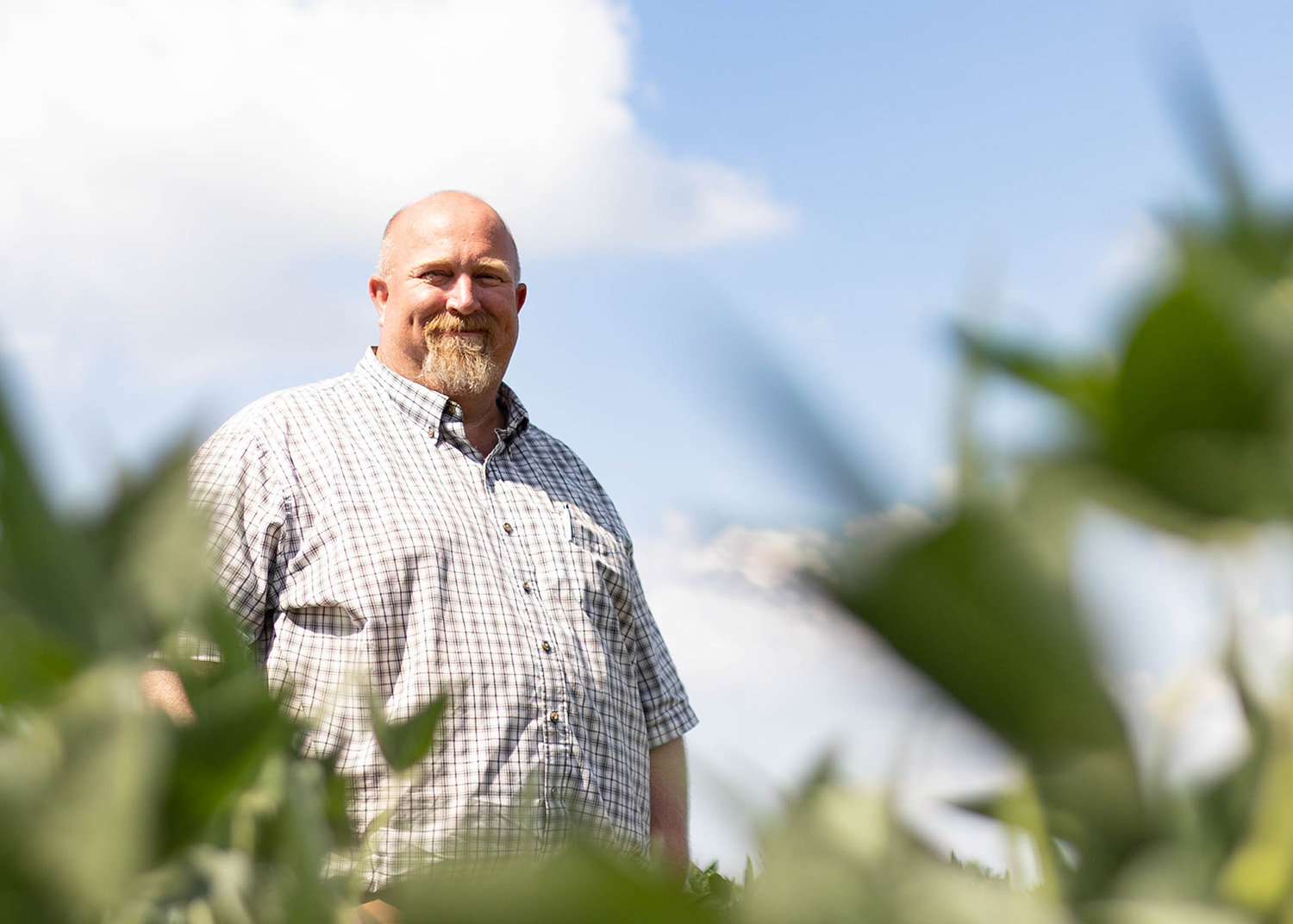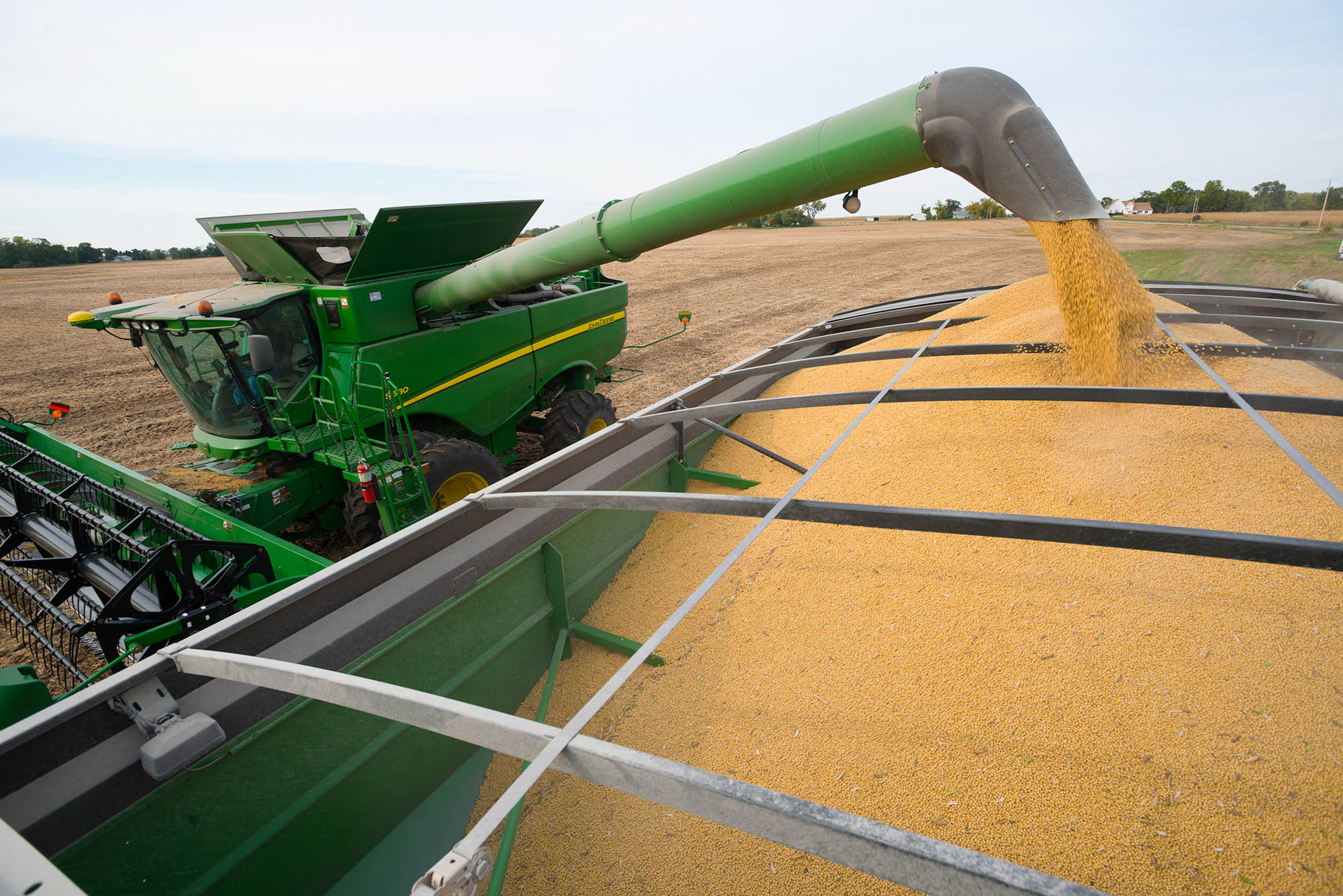
ISA President Robb Ewoldt stands in a soybean field on his farm near Davenport (Photo: Iowa Soybean Association)
A year of growth
December 14, 2021 | Bethany Baratta
By most accounts, 2021 was a positive year for Iowa soybean farmers. Higher prices expanded the profitability outlook for farmers, drought conditions improved, and the return to in-person activities and events brightened spirits.
That’s not to say, however, that farmers didn’t see their share of challenges. Some farmers were forced to replant their crops due to frost. Replacement parts and supplies were hard to come by as the supply chain was pushed to its limits due to labor shortages and a COVID-19 forced economic shift from services to goods.
Supply chain disruptions were then exacerbated by Hurricane Ida, which briefly closed the United States’ busiest conduit between soybean farmers and global customers.
Back to the Hill
After more than a year of webbased meetings and conferences, the Iowa Soybean Association (ISA) resumed its in-person activities. A visit to Washington, D.C., to inform policymakers on ISA priorities, eight district meetings to update members on the association’s direction and ISA’s presence at the Iowa State Fair are just a handful of the ways ISA members came together in 2021.
“Once I was able to hop on an airplane and head back to Washington, D.C., I felt like we were back,” says Robb Ewoldt, ISA president near Davenport.
He was on one of the last flights out of Washington, D.C., in March 2020 after testifying before the Ag Committee about the impacts of the China-U.S. trade war. Two days later, COVID-19 essentially forced the closure of in-person activities in Washington, D.C.
As one of the first ag groups welcomed back to D.C. after a 16-month hiatus, Ewoldt and other ISA members visited with all six of Iowa’s elected representatives about various priorities, including transportation and infrastructure, inheritance taxes and stepped-up basis, trade, market access, and biofuels.
More events are slated for 2022, including ISA’s Winter Soy Summit in January and ISA’s Innovation to Profit conference in February.

Crop success
Heading into August, parts of Iowa were under a severe drought. The expectation was that yields would suffer as a result. But then the rain came. As farmers began harvest, they realized better yields than they expected — some even saw record soybean yields. Some call it luck, others say improved seed genetics.
“When I went into harvest, I wasn’t that optimistic on having a great soybean yield,” Ewoldt says. But a 70-bushel-per-acre farm average proved otherwise. “It was a nice surprise,” he adds.
Prices and supplies
Though soybean prices reached $16 per bushel in May, the cost of inputs closely followed its upward trajectory.
Ewoldt locked in fertilizer supplies in September at $700 per ton. As of November, prices nearly doubled, mirroring the rise in 2007-2008 amid gas shortages and supply chain disruptions.
Despite locking in prices, farmers report they aren’t guaranteed the supplies they’ve confirmed for 2022.
A lesson in flexibility
This year was a lesson in flexibility and patience, Ewoldt says.
He adjusted his game plan in 2021. With higher soybean prices came the flexibility and economic opportunity to provide additional fungicide protection on his crops, thus building in some resiliency and pushing yields higher.
With 2022 just one calendar page-flip away, he’s making plans for the next growing year.
“From an equipment standpoint, I’m keeping a larger replacement of parts inventory on hand,” Ewoldt says. “Some of those things I would typically rely on my dealership to have, but that’s not so anymore."
Supply chain disruptions have proven that patience is a virtue.
“I’m being patient and ordering things well ahead of time,” he continues. “It made me think about other things I might need — we better be ordering it right now because we don’t know when it will show up.”
Back